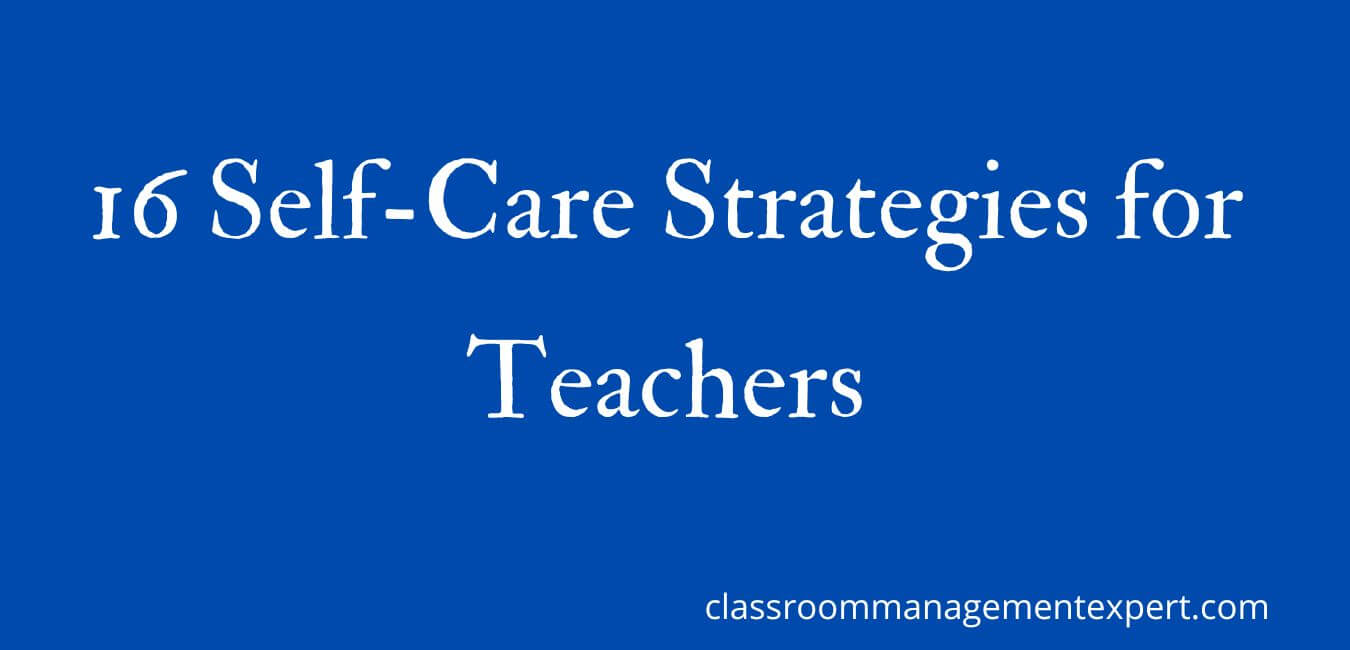Prioritizing mental health is crucial for teachers as it directly impacts students’ well-being and academic success. Creating a safe and supportive environment, reducing stigma, understanding diverse needs, and fostering empathy are key aspects that educators should focus on.
Recognizing warning signs early, facilitating referrals, and supporting colleagues can greatly enhance the overall mental well-being of the school community. This emphasis on mental health not only benefits teachers personally and professionally but also contributes to a positive work environment and increased job satisfaction.
Understanding the significance of mental health for teachers is essential for promoting a thriving educational experience.
Importance of Mental Health for Teachers
Early Identification of Issues
In the realm of education, teachers play a crucial role as they are often the first to notice changes in student behavior that may indicate underlying mental health issues, emphasizing the need for their adept understanding of mental health. Early intervention is key in effectively addressing student well-being.
Teachers, equipped with mental health literacy, can create a supportive environment conducive to student mental health.
Training programs that focus on mental health awareness empower teachers to identify subtle signs of distress and offer appropriate support, potentially preventing the escalation of mental health concerns.
This highlights the importance of teacher awareness and mental health literacy in promptly and effectively addressing student needs.
Understanding the significance of early identification, teachers with mental health literacy can establish a nurturing environment that promotes student well-being.
By recognizing behavior changes promptly, teachers can initiate suitable support measures, fostering open communication and a supportive culture. This enables them to effectively nurture student mental health and well-being, ultimately enhancing the overall learning experience for all individuals involved.
Creating a Safe Environment
As frontline observers of student behavior, teachers play a crucial role in creating a classroom environment that values open communication and encourages students to address their mental health concerns openly. To achieve this, teachers should focus on:
- Building Trust: Establishing a foundation of trust is crucial for students to feel at ease sharing their thoughts and emotions.
- Encouraging Openness: Promoting a culture where students can freely express their feelings without the fear of judgment helps establish a safe space for discussing mental health.
- Fostering Empathy: Demonstrating understanding and empathy towards students’ challenges helps in creating a supportive atmosphere.
- Promoting Self-Care: Educating students on the significance of self-care practices empowers them to prioritize their mental well-being.
Teachers can also play a significant role in:
- Creating Support Networks: Helping students connect with mental health resources and support systems within and outside the school community can offer them the necessary help and guidance.
Reducing Stigma
Engaging in open discussions about mental health allows educators to actively contribute to breaking down stigmas and fostering a more empathetic and inclusive community within educational settings.
This proactive approach not only boosts mental health awareness but also plays a crucial role in diminishing stigma, championing inclusivity, and enhancing community understanding.
By openly addressing mental health issues, teachers create a safe environment for students to freely express themselves without the fear of judgment, thus nurturing a supportive atmosphere where individuals feel empowered to seek help when needed.
To visually illustrate the benefits of reducing stigma through open dialogue, let’s consider the following table:
| Benefits of Reducing Stigma | |
|---|---|
| 1. Enhanced Mental Health Awareness | 4. Promotion of Inclusivity |
| 2. Decrease in Stigma | 5. Fostering Community Understanding |
| 3. Facilitation of Open Dialogue |
Through these conversations, educators not only exemplify healthy behaviors but also emphasize the importance of mental well-being, encouraging students to prioritize their mental health. This collective effort cultivates a culture of support and understanding, ultimately shaping a more compassionate and inclusive educational community.
Supporting Diverse Needs
Understanding the diverse emotional and psychological needs of students is crucial for teachers to effectively support their mental health requirements. Teachers play a vital role in creating a safe and nurturing environment for all students to thrive. Here are key considerations for supporting diverse needs:
- Student Empathy: Cultivating empathy helps teachers connect with students on a deeper level, understanding their struggles and providing appropriate support.
- Emotional Support: Offering a listening ear and showing care can significantly impact students’ emotional well-being, building a sense of security and trust.
- Psychological Understanding: Awareness of various mental health conditions and their symptoms enables teachers to identify when a student may require professional help.
- Diverse Needs: Recognizing that each student has unique requirements assists in tailoring support strategies to effectively meet individual needs.
Developing Empathy
Increasing teachers’ understanding of mental health issues leads to a deeper sense of empathy towards the experiences and challenges their students may face. This empathy development is crucial for fostering a supportive environment where students feel heard, valued, and supported.
With a heightened awareness of mental health issues, educators can better grasp the emotional insights required to effectively support their students.
Through enhanced awareness, teachers can identify signs of distress, anxiety, or other mental health issues, enabling them to intervene early and offer necessary assistance.
This proactive approach not only addresses immediate concerns but also contributes to the overall well-being of students in the long term. Additionally, developing mental health literacy empowers teachers to address sensitive topics with compassion and expertise, building trust and promoting open communication with their students.
Enhancing Student Engagement
Teachers who actively support their students’ mental well-being create an environment that fosters increased engagement and active participation in the classroom. Prioritizing student well-being helps cultivate a supportive atmosphere, ultimately boosting student engagement and enhancing overall learning experiences.
Here are four key ways in which supporting students’ mental health can lead to heightened engagement and active participation:
- Enhanced Student Engagement: Students who receive support for their mental well-being are more likely to actively participate in classroom activities and discussions.
- Improved Overall Well-being: By prioritizing mental health, educators contribute to enhanced well-being, positively influencing students’ motivation to engage in learning.
- Establishing a Supportive Environment: Nurturing a supportive environment is crucial for students’ emotional and mental health, laying the groundwork for active participation in class.
- Promoting Mental Health Literacy: Teachers who advocate for mental health literacy facilitate early detection of issues, enabling timely interventions to support student well-being.
Preventing Crises
Incorporating mental health awareness into educational practices equips educators with the essential tools to identify warning signs and intervene effectively, thus playing a crucial role in preventing crises.
Crisis prevention and intervention are vital aspects of a teacher’s responsibility to maintain a safe and supportive environment for students. Promoting early identification and awareness of mental health issues allows teachers to address concerns proactively before they escalate.
Effective communication with students, parents, and mental health professionals is essential for providing timely support and intervention.
Reducing stigma through education is key to creating a culture where students feel comfortable seeking help when needed. Teachers must be prepared to understand and support the diverse needs of their students, offering tailored assistance and resources.
By fostering a supportive and inclusive environment, educators can help prevent crises by addressing mental health challenges promptly and effectively. Recognizing warning signs, providing appropriate interventions, and offering ongoing support are all critical components in preventing mental health crises in educational settings.
Cultural Competence
Understanding the cultural background of students’ behaviors and attitudes towards mental health is crucial for teachers to effectively support their diverse needs in educational settings.
Cultural sensitivity significantly influences how mental health is perceived and addressed among varied student populations.
When teachers acknowledge and honor student perspectives on mental health, they can cultivate a more inclusive and nurturing learning environment.
To achieve this, teacher training programs should include modules that enhance educators’ comprehension of how cultural factors impact mental health perceptions.
Community engagement also plays a vital role, as involving families and local community members can offer valuable insights into culturally appropriate approaches to promoting students’ mental well-being.
Developing emotional intelligence is essential for teachers to sensitively navigate cultural nuances and respond empathetically to students’ mental health concerns. Embracing cultural competence in mental health awareness enables teachers to bridge gaps, foster understanding, and better support their students’ holistic development.
Building Strong Relationships
Understanding and meeting students’ emotional needs and fostering genuine connections can significantly enhance educators’ effectiveness in the classroom. Teachers equipped with awareness of mental health can cultivate stronger, more trusting relationships with their students, a crucial element for successful teaching. Implementing strategies to build trust, honing communication abilities, and leveraging emotional intelligence are key steps in creating a supportive atmosphere that promotes student development and well-being.
Trust-building strategies such as active listening, consistency, and respect can lay a solid foundation for meaningful connections. Improving communication skills through clear and open dialogue, empathetic responses, and attention to non-verbal cues can deepen understanding and rapport. Additionally, nurturing emotional intelligence by fostering self-awareness, empathy, and social skills enables educators to better support their students’ emotional growth.
In essence, by prioritizing trust, effective communication, and emotional intelligence, teachers can establish a positive learning environment where students feel valued, understood, and supported in their educational journey. This holistic approach not only enhances academic outcomes but also contributes to the overall well-being and success of students.
Facilitating Referrals
Knowledgeable teachers have a crucial role in guiding students toward the support they need by facilitating referrals to school counselors or mental health services.
When teachers can identify signs of mental health issues and take the necessary steps, they significantly impact students’ well-being. Here are key considerations to keep in mind:
Understanding the referral process is essential for teachers to effectively assist students in need. Providing thorough training on mental health awareness and the referral process equips teachers with the knowledge and skills required to support students effectively.
Supporting Colleagues
Teachers who prioritize mental health can enhance their support for colleagues, nurturing a more positive work environment for all. Encouraging peer support among teachers fosters a collaborative approach where individuals can rely on each other for guidance and understanding. This strengthens team cohesion and promotes emotional well-being across the school community. Engaging in open discussions, sharing experiences, and providing a supportive network for one another are key aspects of creating a supportive environment.
Supporting colleagues in their mental health journeys can lead to improved job satisfaction, reduced stress levels, and increased overall happiness in the workplace. Teachers who value mental health also contribute to their colleagues’ professional development by offering insights, resources, and encouragement.
This supportive atmosphere enables educators to thrive personally and professionally, ultimately benefiting the students they serve. Prioritizing mental health and mutual support among teachers creates a positive and empowering atmosphere that enriches the overall well-being of everyone in the school community.
Enhancing Teaching Methods
Understanding mental health enables educators to tailor teaching approaches for greater inclusivity and flexibility, accommodating a wide range of learning and emotional needs. To enhance teaching methods effectively, educators can consider the following strategies:
- Student Engagement: By comprehending students’ mental health, teachers can design captivating lessons that resonate with their interests and abilities, encouraging active participation and enthusiasm in the learning process.
- Inclusive Teaching: Awareness of students’ diverse mental health needs allows educators to cultivate a supportive and welcoming environment where every student feels valued and respected, irrespective of their challenges.
- Emotional Support: Recognizing the emotional well-being of students empowers teachers to offer appropriate support, guidance, and resources to help them navigate stress, anxiety, or other emotional hurdles that may impact their learning.
- Adaptability in Education: Mindfulness of students’ unique learning styles and emotional needs equips educators to adjust their teaching methods, materials, and assessments to cater to individual differences, ensuring a more personalized and effective learning experience.
Promoting Well-Being
Prioritizing mental health among educators not only enhances their well-being but also significantly impacts the entire school community, leading to improved educational outcomes. When teachers prioritize their mental health, they are better able to create a positive classroom environment and nurture a supportive learning atmosphere. This, in turn, boosts the well-being of students and colleagues within the school community.
Increasing mental health awareness among teachers helps foster a culture of empathy and understanding, breaking down barriers to seeking help and reducing stigma. Educators who prioritize mental health are more adept at identifying signs of distress in students and providing necessary support, ultimately enhancing educational outcomes.
Moreover, when teachers exemplify self-care and prioritize their mental well-being, they serve as role models for students and colleagues, inspiring others to do the same. This positive influence can cultivate a more resilient and supportive school community where individuals feel valued and empowered to achieve their full potential. Ultimately, prioritizing mental health among educators is a crucial step in creating a thriving and successful school environment.
Conclusion
Prioritizing the mental well-being of teachers is akin to nurturing a garden. By caring for educators, they can create a supportive environment for students to thrive.
Enhancing their understanding of mental health, establishing safe spaces, reducing stigma, and catering to diverse needs are essential ways in which teachers contribute to the overall well-being and academic success of the school community.













